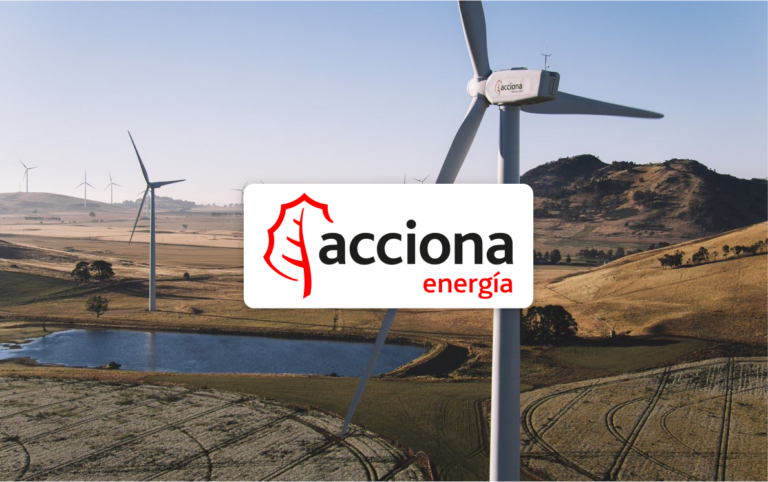It’s essential for companies to communicate with their stakeholders on a regular basis to build better relationships, understand their needs and concerns, and keep them consistently informed and updated. But there are some important do’s and don’ts you must keep in mind when interacting with stakeholders to ensure effective communication.
Effective communication can positively shift the success of your project. Not only is it a key contributor to a project’s success, but it can make or break your ongoing relationships with your stakeholders. You see, accuracy and transparency are vital for effective communication, but you can’t simply wait for you stakeholders to come to you.
The best teams have a clear plan of communication in place to remain proactive, consistent, and reliable with their stakeholder groups of interest. They also ensure they are continually learning to improve and optimise how they connect and communicate with stakeholders in the future.
A good communication plan starts with a good foundation. We’ve compiled a quick list of do’s and don’ts when communicating with stakeholders so you can feel confident.
Do’s
- Be clear and concise with your stakeholders
- Understand your stakeholders
- Actively listen to your stakeholders
- Be honest and transparent with your stakeholders
- Provide context and clarity to your stakeholders
Don’ts
- Make assumptions about your stakeholders
- Overpromise and underdeliver to your stakeholders
- Dismiss stakeholder feedback
- Ignore stakeholder emotions
- Be defensive to your stakeholders

Do’s:
1. Be clear and concise
It’s important for you to use clear and concise language to ensure your message is getting across effectively to your stakeholders. Using terminologies that may seem too technical or difficult for stakeholders to understand can cause them to feel excluded or confused, as the language gets lost in translation.
As a result, using language that is easy for everyone to understand can help to prevent any confusion or misunderstandings. This will ensure that communication is interpreted effectively and avoid any time being wasted.
2. Understand your stakeholders
Effective communication paired with solid stakeholder engagement ensures you understand the wants and desires of your stakeholder groups of interest. Knowing what your stakeholders’ needs and expectations are can help you modify your communications to deliver greater impact and gain more valuable insights.
For example, you should prioritise informing your stakeholders on the progress of your project and expected timelines if they place high importance on accountability and transparency. This is important as you can easily develop stakeholder relationships, trust, confidence, and buy-in for your most important projects. Plus, you will gain greater clarity into the outcome your stakeholders desire.
The type of communication preferred by stakeholders also needs to be recognised. Face-to-face conversation, email, phone, and online meetings are all different examples of communication so understanding what different stakeholder groups prefer will also influence your strategy.
An SRM (Stakeholder Relationship Management) can help you identify these preferences and manage your stakeholder relationships more effectively. Having a detailed history of stakeholder groups and their favoured methods of contact accessible to appropriate teams in your SRM means you don’t have to second-guess your communication channels.
3. Actively listen
You should actively listen to the concerns of your stakeholders and respect their shared values. This requires not only listening to what they have to say, but also paying attention to nonverbal signals (if you’re in person), understanding their context, empathising with their emotions and views, and acknowledging them.
Giving stakeholders a voice makes sure that they are heard, as you’re allowing them to express their thoughts and have their values taken into consideration. Ongoing stakeholder engagement comes into play here as you need to remain attentive to all stakeholders to ensure you build a greater level of connection.
This deliberative process also ensures you create solutions that are specifically designed for your stakeholders. This not only removes friction in the design process but your stakeholders should trust you more as they can visibly see their feedback considered.
4. Be honest and transparent
Being open and honest about a situation is very important to ensure you’re keeping your stakeholders informed. It is crucial to not withhold any critical information. You should be paying attention to how your stakeholders feel about the project and what they see and notice.
For example, if a project is expected to be delayed by several months, can your stakeholders visibly see this delay already? If so, you’re already behind in your communications. If not, inform your stakeholders with all key updates before they start questioning your reliability.
Transparency helps build trust and credibility with your stakeholders. Trust is not built overnight, but more so over time. So, remaining proactive and informing your stakeholders before they’re informing you is essential.
5. Provide context
Have you ever had a conversation with someone and felt as if what they said didn’t make sense? Well, it’s essential to consider the possibility that your stakeholders could feel the same way. So, whether it’s presenting new ideas, updating progress, or seeking feedback, you need to provide your stakeholders with more context and background knowledge to help them better understand the message they’re trying to convey.
Providing more background can assist stakeholders in comprehending the project’s objectives and any possible opportunities or challenges. By giving this context, stakeholders can make more informed decisions and provide helpful feedback or ideas by understanding a project more in-depth. You also can reduce time spent on responding to similar questions or queries if the information wasn’t clear or concise.

Don’ts:
1. Make assumptions
Although it may be standard procedure to assume your stakeholders’ expectations and how they might be feeling, sometimes what you consider to be true is not necessarily the reality. Therefore, making sure that you’re on the same page can avoid any confusion or setbacks.
Asking questions is a great way to stay on top of everything and to gain other people’s perspectives. It gives everyone a chance to express their own needs and ideas while helping to retain additional and useful knowledge. Gaining insight into your stakeholders’ requirements and expectations from you will aid in building trust and strengthening positive relationships.
Utilising webforms to capture to identify key concerns or issues your stakeholders have regarding an upcoming project can mitigate the risk of assumptions.
2. Overpromise
While it’s understandable to want to please your stakeholders, overcommitting or breaking promises can harm your reputation. Setting unrealistic timelines and being generally unreliable can result in disappointment and loss of trust from stakeholders. You’re also setting yourself up for greater issues over the lifecycle of your project as you continue to fall through on promises with more and more stakeholders.
Any constraints, obstacles, or risks must be communicated honestly and publicly. If revisions or adjustments are required to your promises, it is preferable to convey them quickly and seek input or agreement from your stakeholders, rather than attempting to reach unachievable targets at the cost of quality or integrity.
3. Dismiss feedback
Neglecting comments from stakeholders can have a negative impact on your reputation, as it can appear as though you are uninterested in hearing what your stakeholders have to say. Listening to your stakeholders is important because they may bring a new or unique perspective that you have either overlooked or have not yet explored.
As a result, if your stakeholders’ wants or concerns are not noticed or addressed, they may begin to feel overlooked or devalued. As a result, major consequences such as unforeseen expenses, project delays, and stakeholder involvement may occur.
Tracking issues over time within your SRM will ensure that any shifts in feedback from your project stakeholders can be identified and addressed.
4. Ignore emotions
Stakeholder emotions can easily be influenced and affected by the slightest changes in perceptions, attitudes, and behaviours. Negative reactions, misunderstandings, or misinterpretations may result from ignoring or dismissing their emotions, which ultimately impacts the relationship. Emotions can also influence how stakeholders perceive information, interpret messages, and make choices.
You can gain a better understanding of your stakeholders’ perspectives, worries, and motives by recognising and acknowledging their emotions. By understanding their emotions, you can tailor your communication to resonate with their emotional needs and motivations and influence their decision-making positively. Showing empathy, understanding, and respect toward a stakeholder’s emotions can build positive relationships, foster collaboration, and enhance mutual understanding and trust.
5. Be defensive
While disagreements are inevitable in stakeholder communication, it is crucial to strive for a calm and composed approach and avoid being defensive or argumentative. Reacting defensively can further escalate a situation and can hinder effective communication.
Instead, it is vital to actively strive to understand the perspective of your stakeholders. Aim to find common ground by working collaboratively together toward identifying a mutually acceptable solution. This approach can help foster positive relationships and effective stakeholder communication.
Effective stakeholder communication isn’t always easy, but by following these tips above, you can avoid common pitfalls. Active listening, speaking clearly and concisely, considering stakeholder needs, and using appropriate language and tone can promote open and honest communication, build trust and increase credibility. Additionally, avoiding mistakes such as making assumptions, ignoring nonverbal cues, and not providing context can prevent misunderstandings and misinterpretations.
At the end of the day, you know your stakeholders and you know what works (or doesn’t work) for them. Lean into the communication channels they prefer and ensure you’re proactive in responding to any issues or hiccups as they arise.
Plus, if you have an SRM that can segment your stakeholder groups to send targeted emails, newsletters, or SMS to then you’re already setting yourself up for success.



